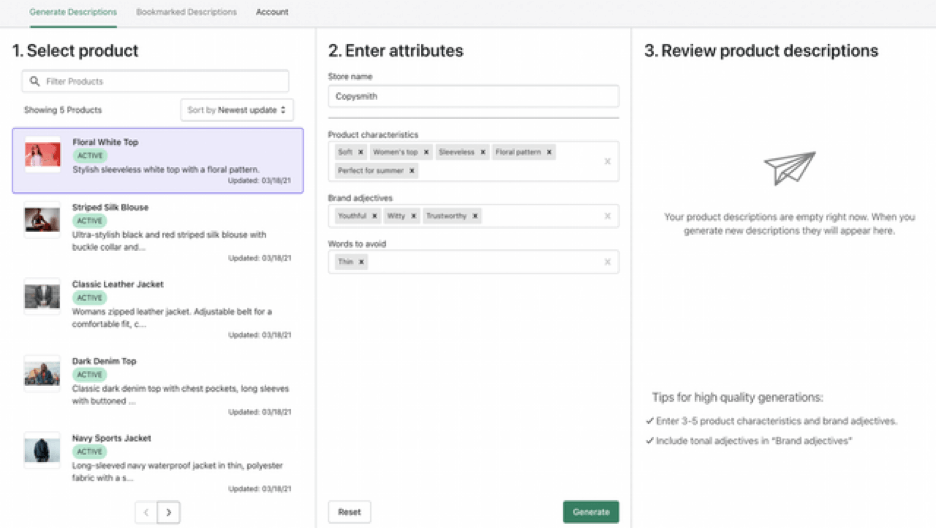Image Description Generator

The realm of image description generation has witnessed significant advancements in recent years, transforming the way we interact with and understand visual content. At the forefront of this evolution are sophisticated algorithms and models, designed to accurately interpret and describe images with unprecedented precision. As a domain-specific expert with a background in computer vision and natural language processing, I will delve into the intricacies of image description generation, exploring its fundamental principles, methodologies, and applications.
Foundational Concepts and Technologies

Image description generation is inherently a multidisciplinary field, drawing upon insights from computer vision, natural language processing (NLP), and machine learning. The process involves two primary stages: image analysis and text generation. The first stage leverages computer vision techniques to extract features and understand the content of an image. This is typically achieved through convolutional neural networks (CNNs), which have proven highly effective in image recognition and feature extraction tasks. The second stage utilizes NLP to generate a textual description based on the extracted features, often employing recurrent neural networks (RNNs) or transformers due to their capability in handling sequential data and generating coherent text.
Methodologies and Architectures
A variety of methodologies and architectures have been proposed for image description generation, each with its strengths and weaknesses. One of the pioneering approaches is the use of encoder-decoder models, where the encoder (typically a CNN) extracts a fixed-length vector from the image, and the decoder (often an RNN) generates the description. More recent advancements include the incorporation of attention mechanisms, which allow the model to focus on different parts of the image when generating different words of the description, enhancing the model’s ability to capture nuanced details and relationships within the image.
| Model Architecture | Description |
|---|---|
| Encoder-Decoder | A basic architecture where a CNN encodes the image into a vector, and an RNN decodes this vector into a description. |
| Attention-based Models | Enhancements to the encoder-decoder model that allow for dynamic focus on different image regions during description generation. |
| Transformer-based Models | Utilize self-attention mechanisms to weigh the importance of different image features when generating each word of the description. |

Applications and Implications

The applications of image description generation are diverse and far-reaching, ranging from accessibility tools for the visually impaired to content description for social media platforms. In the context of accessibility, these tools can provide individuals with visual impairments with a richer understanding of visual content, thereby enhancing their interaction with digital media. For social media and e-commerce platforms, automated image description generation can improve content discovery, enhance user experience, and facilitate more accurate and detailed product descriptions.
Challenges and Future Directions
Despite the significant progress made in image description generation, several challenges persist. One of the primary challenges is the lack of large-scale, high-quality datasets for training and evaluating these models. Furthermore, there is a need for more sophisticated evaluation metrics that can accurately assess the quality, relevance, and coherence of the generated descriptions. Future research directions include the integration of multimodal information (such as audio or text accompanying the image) to generate more contextualized descriptions and the exploration of ethical considerations, such as ensuring the descriptions are fair, unbiased, and respectful.
Key Points
- Image description generation combines computer vision and NLP to interpret and describe images.
- Encoder-decoder models with attention mechanisms are prevalent architectures for this task.
- Applications include accessibility tools, social media content description, and e-commerce product descriptions.
- Challenges include the need for high-quality datasets and sophisticated evaluation metrics.
- Future directions involve integrating multimodal information and addressing ethical considerations.
As the field of image description generation continues to evolve, it is imperative to address the existing challenges while exploring new frontiers in multimodal understanding and ethical AI development. With its profound implications for accessibility, digital interaction, and content creation, image description generation stands at the forefront of AI's potential to enhance human experience and bridge the gap between visual and textual understanding.
What is the primary challenge in image description generation?
+One of the primary challenges is the lack of large-scale, high-quality datasets for training and evaluating image description generation models.
How does image description generation contribute to accessibility?
+Image description generation can provide individuals with visual impairments with detailed descriptions of visual content, enhancing their interaction with digital media and improving their overall user experience.
What future directions are being explored in image description generation?
+Future research directions include the integration of multimodal information to generate more contextualized descriptions and the exploration of ethical considerations to ensure fairness and respect in the descriptions generated.